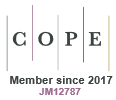Just Accepted
This article has been peer reviewed and accepted for publication. It is in production and has not been edited, so may differ from the final published form.
Proline Hydroxylation and C-terminal Amidation in µ-Conotoxins Increase Structural Stability and Potency at Sodium Channels
Abstract
Conotoxins are disulfide-rich peptides isolated from the venoms of marine cone snails. These natural products have inspired the development of several drug candidates and novel therapeutic leads. In addition to disulfide bonds, many conotoxins are highly modified with posttranslational modifications (PTMs) such as proline hydroxylation, C-terminal amidation, and glycosylation, among others. These modifications can alter the charge, size, and hydrophobicity of the conotoxin, influencing its interaction with target receptors and modulating its potency and selectivity. PTMs can also affect the folding kinetics and conformational stability of the peptide, which further impacts its biological activity. Although conotoxins undergo a variety of PTMs, the functions of many of these modifications remain unclear. Here, we explored the structural and functional implications of PTMs in two representative conotoxins, PIIIA and TIIIA of the µ-pharmacological family. We synthesized a series of PIIIA and TIIIA peptides bearing native hydroxyproline and C-terminal amidation PTMs, along with their unmodified counterparts. Solid phase peptide synthesis and non-selective disulfide bond formation provided access to pure forms of the eight possible variants for in vitro comparison of their oxidative folding. Structural studies using nuclear magnetic resonance (NMR) spectroscopy, alongside electrophysiological and serum stability assays, were conducted to characterize the functional roles of the PTMs in these conotoxins. Our results suggest that, whereas C-terminal amidation has a crucial role in folding and structural integrity, proline hydroxylation significantly influences the in vitro oxidative folding, stability, and biological activity of these conotoxin peptides.
CH25071 Accepted 22 July 2025
© CSIRO 2025



